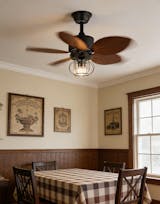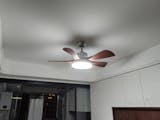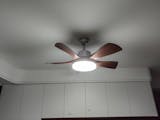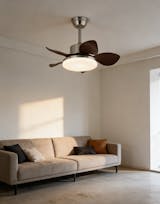Navigation
- Types of Pendant Lights for Kitchens
- Choosing the Right Pendant Light for Your Kitchen
- Installing Pendant Lights in Your Kitchen
- Conclusion
Your kitchen is the heart of your home, and it deserves to look beautiful. Whether you are cooking for your family or entertaining guests, the right pendant lighting can transform your kitchen into a warm, inviting space. With so many types of pendant lights available, from clear glass to art glass, choosing can be overwhelming. This article will delve into the art of pendant lighting and explore how it can elevate your kitchen decor. From stylish globe pendant lights to energy-efficient LED pendant lights, we'll guide you through choosing the perfect pendant lighting for your kitchen. Get ready to be inspired and discover how the right pendant light can take your kitchen design to the next level.
Types of Pendant Lights for Kitchens
Nothing elevates the look of a kitchen like a stylish pendant light. The right glass pendants can transform an ordinary space into a welcoming, luminous oasis.
Clear glass pendants allow natural light to bounce around the room, filling it with a bright, airy glow. They work well in any style, from rustic to modern. Colorful glass pendants infuse personality with cheery hues like aqua, orange or amber. Handcrafted art glass pendants featuring intricate patterns make a statement above an island or dining table.
Globe pendant lights add vintage flair, especially clustered bronze or brass globes in industrial styles. Drum and cylinder pendants offer a simpler aesthetic that suits farmhouse and minimalist décor. The warm glow of Edison-style incandescent bulbs lends an authentic retro feel.
LED pendant lights bring function and flexibility. Compact and long-lasting, these fixtures allow for creative cluster arrangements that bathe the entire kitchen in soft, spill-resistant light. Thin tube pendants can be bent and shaped to fit any space.
Choose pendants that complement your style while satisfying practical needs. Mix clear glass with brass globes, or pair art glass with cylinders for a personalized chef's delight. With so many shapes, sizes, and finishes, there is a perfect pendant light somewhere to inspire your culinary creations.

Choosing the Right Pendant Light for Your Kitchen
Several factors determine the ideal pendant lights for your space. Consider the size and shape of your kitchen, ceiling height, and placement of fixtures. Larger kitchens require multiple pendant lights at varying heights, while smaller kitchens suit a single, centered pendant.
Think about the overall style you wish to achieve. Farmhouse kitchens call for traditional glass globe or drum pendants, while modern spaces pair well with minimalist cylinder pendants or cluster arrangements of thin, rod-like fixtures.
Match the finish, color, and material of the pendant lights to your existing décor and cabinetry. Stainless steel and brushed nickel fixtures work well with stainless steel appliances, while bronze, oil-rubbed bronze, or matte black lamps complement wood finishes. Clear, colored, or frosted glass pendants blend in discreetly.
Finally, have fun creating one-of-a-kind combinations. Mix and match pendant light styles of varying sizes, shapes, and materials to infuse your own personality. Cluster mismatched glass pendants or hang a modern drum pendant above a traditional bronze globe fixture for a curated yet eclectic look. With some imagination, your kitchen pendant lights can become a design highlight.
Installing Pendant Lights in Your Kitchen
Installing kitchen pendant lights correctly requires some electrical know-how and safety precautions. Before starting, shut off the main power to the fixture circuit at the breaker box. Test with a voltage meter to ensure all power is off.
Position the pendant light junction box in the center of where you want the fixture to hang. Feed the pendant light wires through the box and connect the ground wire, neutral wire, and live wire to their corresponding wires in the junction box. Twist wire connectors securely to avoid loose connections that can cause shorts or sparks.
Attach the canopy or mounting plate to the junction box and secure it with mounting screws. Attach the pendant light fixture to the mounting plate and secure it firmly. Turn the power back on at the breaker box.
For optimal lighting, hang pendant lights 36 to 42 inches above the countertop and space them 6 to 8 feet apart for even coverage. Avoid crowding fixtures close together or hanging them too low. Consider LED options for maximum energy efficiency and longevity.
Regularly inspect electrical connections and test pendant light fixtures for safe operation. Replace worn wires, loose connections, or damaged switches immediately to avoid fire hazards.

Conclusion
Whether classic or modern, properly installed and carefully chosen, pendant lights can become the focal point of your kitchen - the finishing touch that elevates an ordinary room into a warm and welcoming space for meals, laughter, and good company. Let there be light - start designing your own pendant lighting masterpiece today.
Read More
- Finding a beautiful and affordable crystal pendant light -- Metavaya
- Set the Mood for Cozy Family Gatherings with Pendant Lights: Tips and Inspiration – Metavaya
- A Comprehensive Guide to Pendant Lighting Styles for Your Dining Room – Metavaya
- How to make house look more expensive & high-end? – Metavaya











